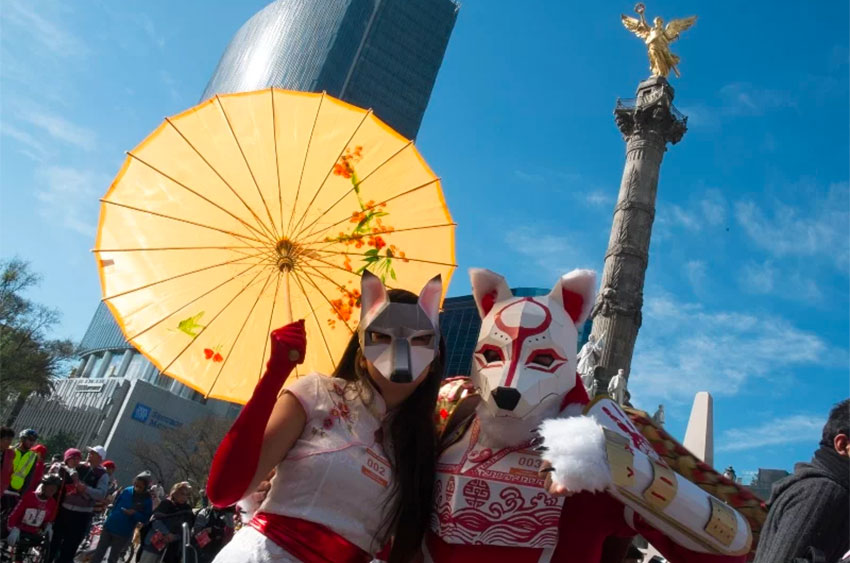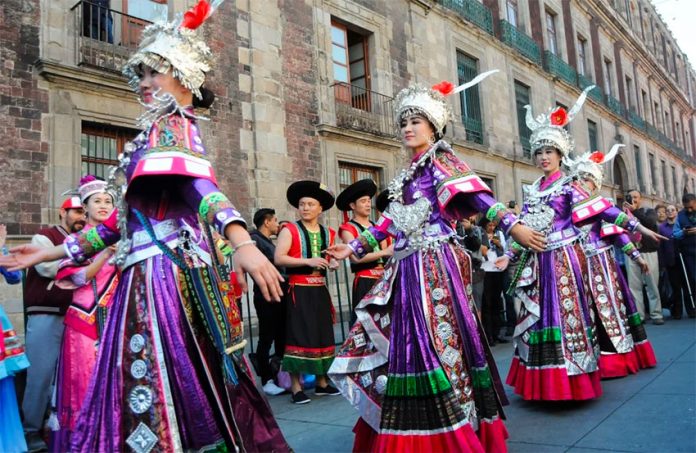One doesn’t have to travel to China or even the United States to experience the dawn of the Year of the Rat next week: it can be done right here in Mexico.
Even though Mexico never attracted the numbers of Asian immigrants that the U.S. has, they have been arriving since the early colonial period and have made an impact.
Asian immigration to Mexico started with the Manila Galleons, which connected Mexico with Asia through the Spanish colony of the Philippines. Some came as free immigrants while others came as slaves.
The ethnic breakdown of this immigration is impossible to determine precisely as most Asians (then and now) are colloquially referred to as chinos (Chinese). For example, the famous dress called the china Poblana of Puebla was most likely from India.
A wave of Chinese came as guest workers in the late 19th century, when Mexico needed cheap labor to build its railroads and to develop farmlands, especially in hot, arid Baja California. This brought many Chinese, almost entirely men, to the north of the country as well as Mexico City.

The most famous Chinatown to appear in the north was La Chinesca in Mexicali, which still has an ethnic Chinese population of about 10,000. La Chinesca is famous for its subterranean passages that in the past not only connected opium dens and brothels but provided relief from the extremely high temperatures of the desert. It was the largest Chinatown in northern Mexico until it was recently surpassed by Tijuana, which boasts a population of about 15,000.
Both cities host cultural events related to the New Year, sponsored by local community organizations, along with the Chinese consulates. In Tijuana, these events will be based at the Centro Cultural Tijuana starting the evening of January 24. In Mexicali, there are various performances of lion and dragon dances including one in front of the Asociación China Mexicali starting at 11:00am on January 25.
Mexico City does not have the country’s largest or most visible Chinese ethnic community, but its New Year celebrations are the largest and best promoted. The historic base of Chinese identity is a neighborhood called the Barrio Chino, consisting of just two blocks on Dolores street, just south of the Alameda Central in the historic center.
In the last 10 years or so, city tourism officials have worked to make the area more attractive to visitors, adding Chinese-style decorative elements in the public spaces in and around Barrio Chino.
However, unlike Chinatowns in New York and San Francisco, don’t expect to hear people speaking Chinese or even look very Asian. This is because almost all the residents and business owners here are of mixed heritage. Chinese immigration to Mexico has been heavily restricted since the Mexican Revolution, and recent immigrants have moved mostly to areas outside the city center.
Chinese New Year celebrations are promoted heavily by the city and attract very large crowds to the very small area, as they are curious to see dancing dragons and lions. This year, Barrio Chino’s main events are on January 25, starting at 10:00am and continuing until 8:00pm.
In addition to traditional parades and fireworks in Chinatowns, the Chinese government and various Chinese cultural associations have coordinated to take advantage of annual New Year’s celebrations to promote Chinese culture and China itself.
The Chinese Embassy, along with the Centro Cultural de China en México, has organized over 40 events with 20 Mexico-based organizations. In Mexico City alone, they include a photographic exhibit at Reforma 222 (January 15 to February 2), a children’s painting and drawing contest at the Museo Nacional de las Culturas (January 16 to February 23) and China Cultural Week at the Autonomous University of Nayarit (February 7-14). Music and dance performances will be held in the capital, Tijuana and Mexicali and even more at the Confucious Institutes in Mexico City, Mérida, Monterrey and Chihuahua.
More details on these and other cultural event can be found at the website of the Centro Cultural de China in México (in Spanish).
Source: Chilango (sp), El Herald de México (sp)
